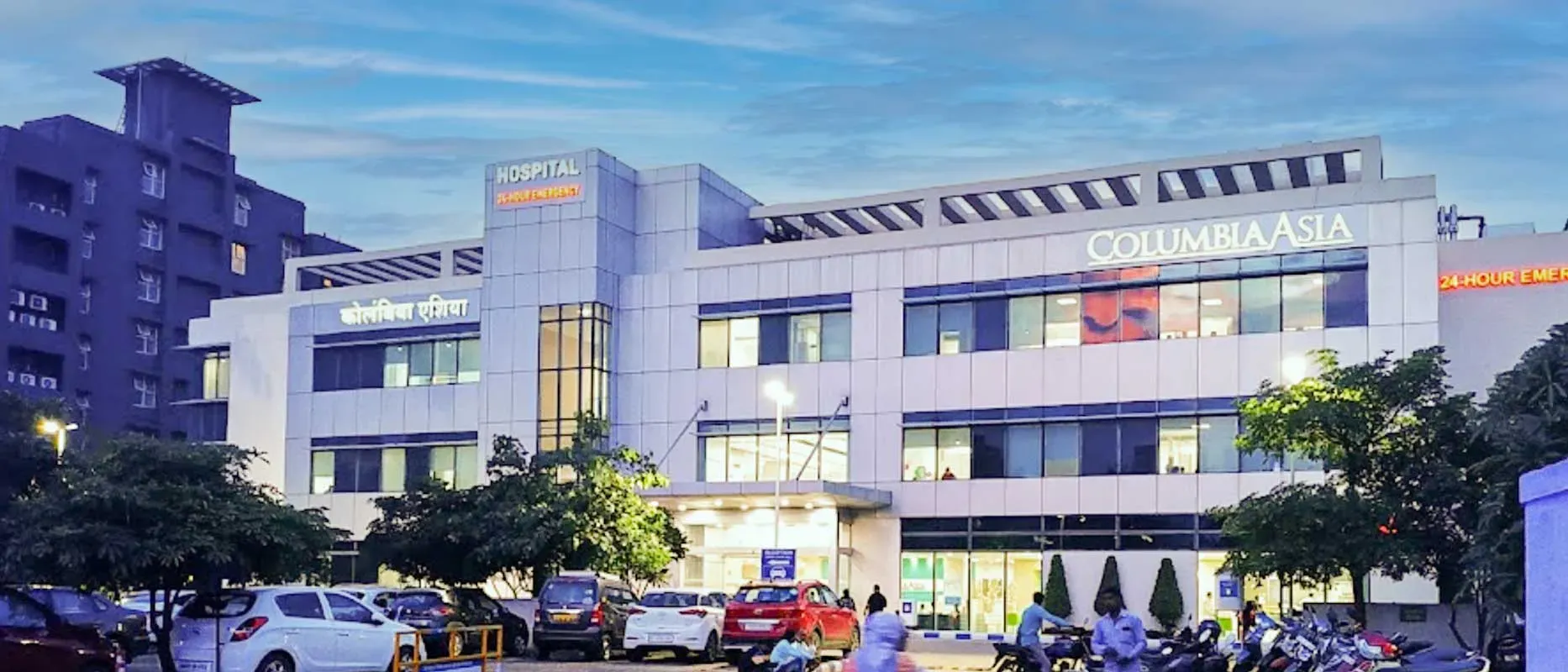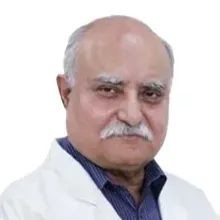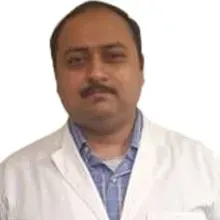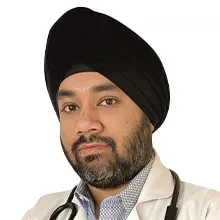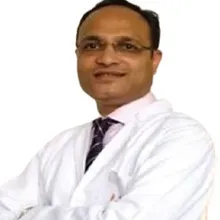Overview of Video Assisted Thoracic Surgery Treatment India
Video-Assisted Thoracic Surgery is a minimally invasive surgery to diagnose and treat chest related problems. It is commonly performed to remove part of the lung due to cancer. Commonly known as VATS, it is performed with a thoracoscope using special instruments and small incisions to minimize the pain. It is also known as pleuroscopy, thoracoscopic surgery or thoracoscopy.
Human body has 2 lungs - right and left lung. These lungs are connected to the mouth through several tubes. These tubes help lungs to bring oxygen into the body and get rid of carbon dioxide from the body. If part of the lung is removed during the surgery, the remaining lung tissue is enough to provide oxygen and remove carbon dioxide.
During this procedure, a tiny camera is inserted in the chest that transmits images of the inside of the chest onto the video monitor. Surgeons will make 3 small incisions approximately 1-inch of each. It has added benefits over traditional surgery, which includes:
01. Shorter hospital stay
02. Decreased pain
03. Fast recovery
04. Reduced risk of infection
05. Less bleeding
Types of Video Assisted Thoracic Surgery Treatment India
Types of VATS
01. VATS Lobectomy - Lobectomy is the common surgery performed to treat lung cancer. It is traditionally performed during thoracotomy surgery. In thoracotomy procedure, a large incision is made on the side of the chest. The ribs are spread apart to get access to tumor or affected tissue. VATS lobectomy allows surgeons to perform the same operation using a minimally invasive approach.
In this procedure, surgeons will make three 1-inch incisions and one 3 to 4 inch incision to get access to the tumor without spreading ribs. The surgeon will be able to see the inside of the chest with the help of a small video camera which will be inserted through a small incision. The procedure is carried out with other long and small instruments passed through another incision. However, this surgery is best for stage 1 lung cancer only.
02. VATS Sympathectomy - In this procedure, two 2mm incisions are made to pass a tiny video camera. Almost all patients are discharged from hospital the same day.
03. VATS Removal of Mediastinal Masses - The tumors that occur in posterior mediastinum (area in the middle of the chest between the lungs) are benign. These tumors are removed by VATS.
04. VATS Resection of Lung Metastases - Lung metastases are small nodules in the periphery of the lung. VATS provides excellent exposure of the lung to surgeons to perform surgery easily. It reduces postoperative pain, surgical trauma, decreases hospital length of stay and more.
05. Minimally Invasive Esophagectomy - The esophageal tumor is removed by small abdominal incisions and small incisions in the right chest.
VATS Procedure Steps
Before Procedure
Surgeons will perform some medical tests to analyze whether video-assisted thoracoscopic surgery is good for you or not. These tests may include:
01. Chest X-ray to see lungs and heart
02. Chest CT scan to see detailed photos of lungs
03. PET Scan for cancer tissue
04. Pulmonary function tests to see functionality of lungs
05. Blood test to check overall health
06. Electrocardiogram for heart rhythm
Surgeon will give you specific instructions before the surgery. If there is any hair on the surgical site, it will be removed before surgery. These instructions may include:
01. Stop taking blood thinners
02. Quit smoking before and after surgery
03. Daily exercise is important, especially breathing exercise
04. Do not eat or drink anything after midnight (a day before surgery)
During Procedure
You will be given general anesthesia, and antibiotics to prevent infection. A breathing tube will be inserted in the throat to provide oxygen to lungs. It will take 2 to 3 hours to perform this surgery.
Surgeons will make small incisions over the chest wall. Surgeons will insert tiny video cameras through one of these incisions and other specially designed surgical instruments through other incisions. He or she will remove the damaged tissue or part of the lung during the surgery. Once the procedure is completed, all the instruments and camera will be removed. The surgical site will be closed with the sutures and bandage will be applied.
After Procedure
Patient will wake up after a couple of hours of the surgery. Medical staff will closely monitor your overall health conditions post-surgery. There will be a small tube in the nose for oxygen and a tube in the chest to collect fluid from lungs. One may feel soreness and pain as well. Medical staff will help you to walk to prevent blood clots. Hospitalization of a few days is required.
Recovery after VATS
Your surgeon will provide instructions on recovery tips before you go home. Not allowed to drive for a few weeks so make sure you have someone who can drive you home.
You will feel fatigue for several weeks but will recover strength gradually. Walking several times a day is recommended to prevent blood clots. Your surgeon will tell when it is safe to drive. However, you will be prohibited from lifting anything heavy for several weeks.
Most people can resume back their daily work activities within 3 to 4 weeks. Follow all the instructions carefully provided by your doctor about exercise, medicine, diet and wound care.
A follow-up visit is required after 7 to 10 days of surgery. In this visit, surgeons will assess the wound sites and will remove staples or stitches in this visit. If you notice any signs of fever, infection, swelling or pain that is not controlled by a painkiller, call your surgeon immediately.
Diagnosis of Video Assisted Thoracic Surgery Treatment India
Why is VATS required?
Surgeons perform VATS for several reasons and on a variety of conditions. Doctors may perform it to remove a small portion of tissue, and perform a biopsy of the lung, tissue around the lungs, lymph nodes, esophagus or tissue around the heart. It can also be performed to completely remove part or all organs. There are several cardiac procedures that may use VATS. These procedures include pacemaker placement, atrial fibrillation ablation and repair to the mitral valve. Moreover, there are other procedures as well using VATS. These include:
01. Hernia repair
02. Draining fluid around the heart
03. Thymectomy
04. Esophagectomy
05. Treat certain types of esophageal disorders
06. Draining part of the lung
07. Lung surgery to treat lung cancer
08. Draining an abscess
09. Hyperhidrosis (Surgery for excessive sweating)
10. Fix congenital problems of the chest wall
11. Recurrent pleural effusions
12. Treating gastroesophageal disease
Candidate for VATS
If you are recommended thoracic surgery, the VATS approach will be considered as the first option. It is also a good option for those who are not candidates for open surgery due to other health issues. However, it is not a good option for those who had chest surgery in the past. Surgeons will carefully evaluate your overall health before deciding on any surgical approach.
Symptoms and Risk factors
VATS Surgery Complications
The possible complications of video-assisted thoracoscopic surgery are:
01. Lung infection (Pneumonia)
02. Bleeding
03. Nerve damage (permanent or temporary)
04. Damage to nearby organs
05. Side effects of anesthesia
06. Air leak
07. Abnormal heart rhythmus
08. Collapsed lung
09. Empyema (thick pus in chest cavity)
10. Blog clot
11. Wound infection
Benefits of VATS
Before the minimally invasive approach, surgeons used to perform open surgeries to access the chest cavity. In this traditional surgery, a large incision was made in the chest and to reach to damage tissue, the surgeon spread multiple ribs. This is not the case with VATS. In VATS, small incisions are made and a high-tech small camera is inserted in the chest. There is no spreading of ribs in VATS. Due to this, it provides additional advantages for patient, including:
01. Shorter hospital stay
02. Fast recovery
03. Ready to do daily activities in few weeks
04. Less scarring
05. Decreased pain
06. Less risk of infection
07. Better surgical results
08. Reduced immunosuppression after surgery
How it's Works
Guiding your Journey from Discovery to Treatment Planning and Beyond.
Discovery
Get a consultation to discover about your treatment
Pre-Treatment
Admission to the best hospital and all pre-treatment facilities
Post Treatment
Get post-treatment follow-up care with medicine fulfillment
Treatment Planning
Hassle-free treatment planning with package & cost estimations
in-treatment
world-class quality procedures and equipment for treatment












